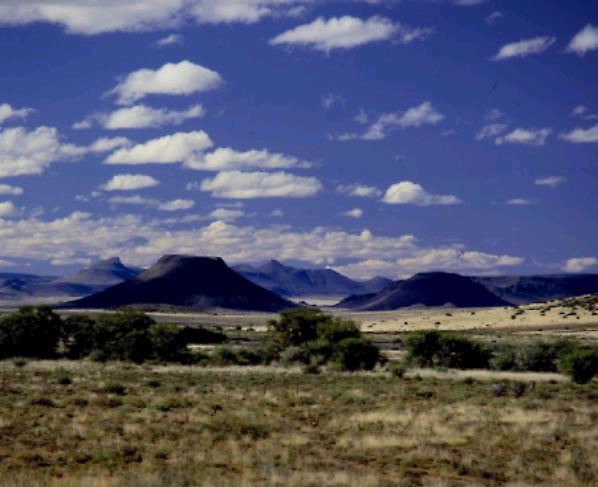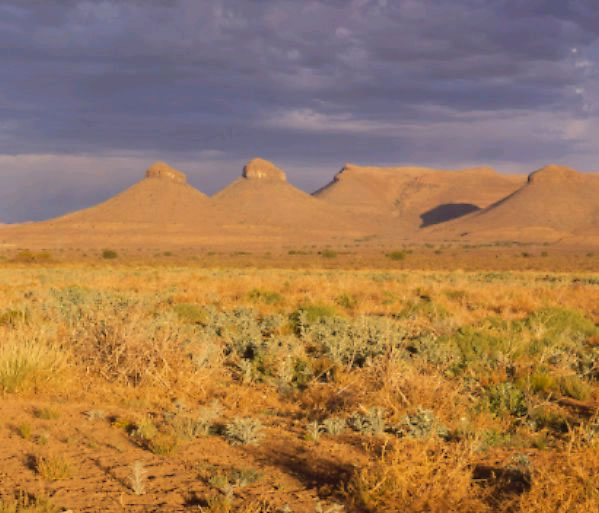The Karoo, the central high-plateau of South Africa, is surrounded by the mighty mountain chains of the escarpment.
 The rain, brought by the humid sea winds, goes down over the weather side of the mountain slopes, so that the lee side stays basically dry.
The rain, brought by the humid sea winds, goes down over the weather side of the mountain slopes, so that the lee side stays basically dry.
Therefore, the endless grassland of the Karoo gets as little as 400 mm of rain annually, which falls mainly in summer. The winter months are almost completely dry.
Precipitation gets even lighter towards the north-west. In the upper Karoo it rains on average less than 200 mm per year, which makes it an arid, semi-desert zone (meaning that precipitation is less than the rate of evaporation).
Due to the average altitude of 1200 m on the central high-plateau, temperatures in summer are usually bearable, although the thermometer reading can sometimes go over 35 degrees Celsius. Towards the north-west, in the direction of the Kalahari basin, due to the lower elevation, temperature are even higher. (100m difference in altitude corresponds to 1 degree temperature difference.) In Upington, for example, at the lower Orange River, one can expect temperatures of around 40 degrees in summer.
 The best time to travel in the Karoo is between May and September. During the day, it is pleasantly warm and sunny (20 - 25 degrees C), and at night it gets cool enough for a good sleep.
The best time to travel in the Karoo is between May and September. During the day, it is pleasantly warm and sunny (20 - 25 degrees C), and at night it gets cool enough for a good sleep.
The village Sutherland, founded in 1857, lies nearly 1 500 metres above sea level and claims to be the coldest inhabited place in South Africa. After extensive research it was selected as the ideal site for an astronomical observatory - the largest of its four main telescopes has a mirror 1,9m in diameter, weighing 1 600kg! The clarity of the atmosphere makes this the ideal place for scientific observations of the stellar system.